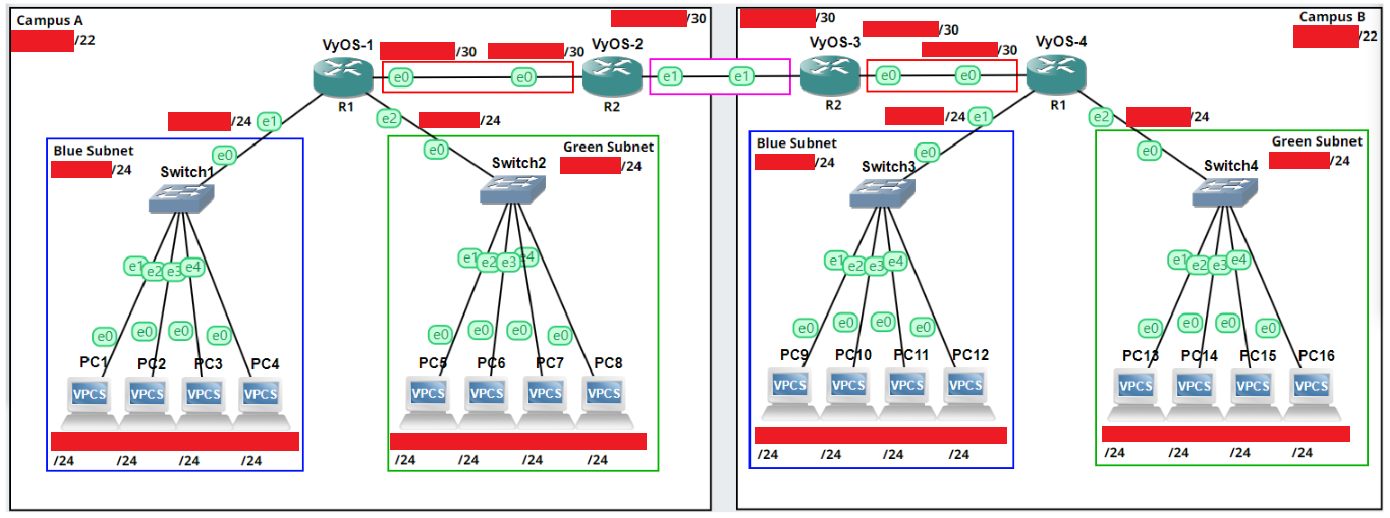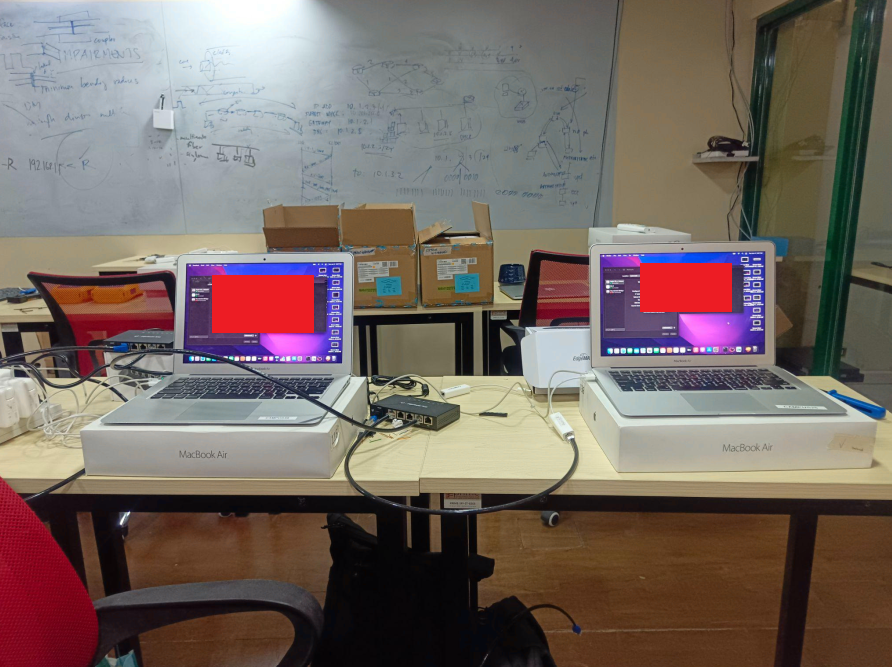IPv4 Addressing and Routing
This exercise involves two parts- an ideal/simulated part via Graphical Network Simulation 3 (GNS3) and hardware/practical part. First, an IP addressing plan was
constructed from a given address by partitioning the address space into four /22 blocks then further decomposed into two /24 subnets, a /24 reserve, a /25
network for servers, and 32 /30 networks for point-to-point (P2P) links. The network was then set up with various configurations, and test pings were done to
verify correct hosts, switches, routers (gateways and interfaces) configurations, as well as to check if a host could communicate with another host on another
subnet. These were then reperformed using physical computers, routers, and cables.
Other skills that were exercised are setting up an Ubuntu Virtual Machine (VM), a Linux-Apache-MySQL-PHP (LAMP) stack, and a Virtual Private Network (VPN) with
OpenVPN to remotely do the activity outside the laboratory. We also experienced educational and ethical Wireshark and crimping an ethernet cable using the
EIA/TIA 568B standard.
- Hardware
- 2 Computers
- 2 EdgeOS Routers
- 3 Ethernet Cables
- Network Cable Tester
- Software
- GNS3
- Ubuntu VM
- LAMP Stack
- OpenVPN
- Other Member:
- Edrick Gador


